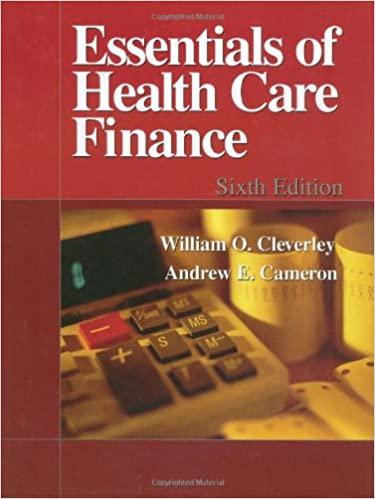Question
Part A: (a) No budget limitation (b) subject to budget Project Required investment (in millions) Risk-adjusted WACC NPV (in millions) Profitability Index Ranking Available Capital
Part A:
|
|
|
|
| (a) No budget limitation | (b) subject to budget | ||
| Project | Required investment (in millions) | Risk-adjusted WACC | NPV (in millions) | Profitability Index | Ranking | Available Capital | Ranking |
| A | $200 | H, | $50 |
| |||
| B | 100 | H, | 45 |
| |||
| C | 150 | L, | 40 |
| |||
| D | 130 | A, | 30 |
| |||
| E | 125 | H, | 20 |
| |||
| F | 100 | A, | 15 |
| |||
| G | 50 | L, | 10 |
| |||
| H | 120 | L, | -5 |
| |||
Except for projects B and C are mutually exclusive, all the other projects are independent. The company estimates that its WACC is 10.5%. The company adjusts for risk by adding 2 percentage points to the WACC for high-risk projects, and subtracting 2 percentage points from the WACC for low-risk projects. The company has a limited capital budget at $600.
Select one:
a. A, B, D, F
b. B, C, D, F
c. A, B, D, F, G
d. B, C, D, E, H
e. B, D, F, G, H
Part B:
Which of the following statements is most correct?
Select one:
a. The constant growth model is inappropriate for mature companies with a stable history of growth.
b. The constant growth model is inappropriate for companies that have negative dividend growth rates.
c. The constant growth model is often appropriate for companies that never pay dividend.
d. The constant growth model is inappropriate for companies that the dividend growth rate is larger than its required rate of return on stock.
e. Two firms with the same dividend and growth rate should have the same stock price.
Step by Step Solution
There are 3 Steps involved in it
Step: 1

Get Instant Access to Expert-Tailored Solutions
See step-by-step solutions with expert insights and AI powered tools for academic success
Step: 2

Step: 3

Ace Your Homework with AI
Get the answers you need in no time with our AI-driven, step-by-step assistance
Get Started


